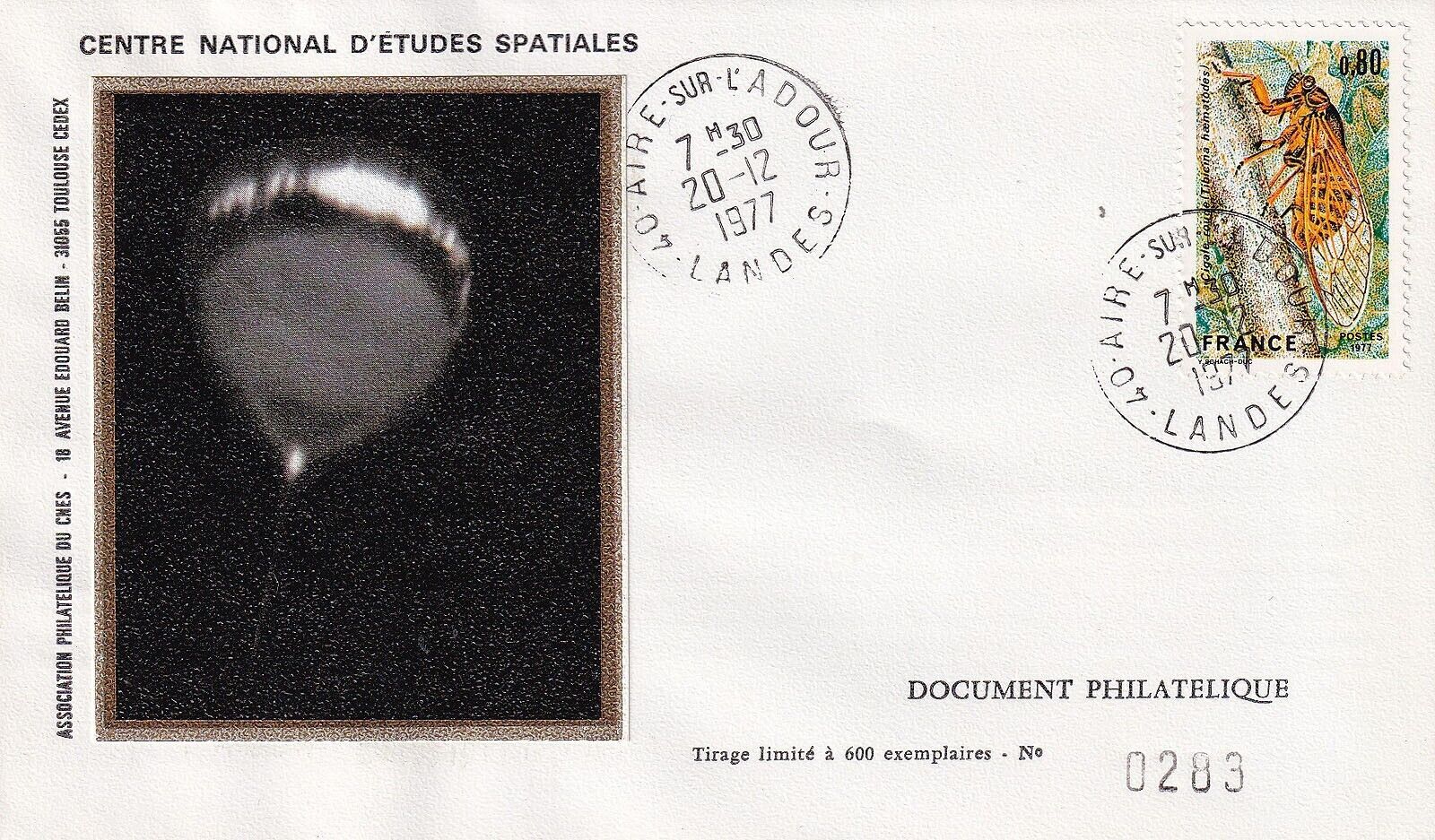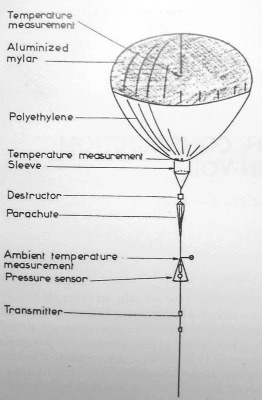Purpose of the flight and payload description
The so called Infrared Montgolfier (MIR) is a balloon developed by the Service d'Aéronomie of the CNRS and CNES in 1977 in an attempt to meet the needs of long-duration flights. The MIR is a hot air balloon "open at the bottom" made of 2 different materials: a top part of aluminized Mylar 12 µm thick making a cavity for absorbing ascendants infrared and block any re-emission toward the sky and the bottom part made of linear polyethylene 15µm thick, an infrared transparent material and tough at cold (-80°C). It only uses helium to gain altitude at takeoff. Their reflective cover provides lift heating the air inside the envelope by the sun during the day or by the infrared radiation coming from the earth during the night. During the day, the MIR flies at an altitude of about 28 km to 32 km while at night it floats between 18 and 22 km depending on the infrared flux radiating from the overflown area and the temperature of the air parcel. It could carry a scientific payload of about 50 kg.
This test configuration
At left we can see an scheme of the flight train of the first test flights of the MIR (click to enlarge). The balloon had a volume of 5.800 cubic meters and was composed by a top part of 12 micron polyester film (Mylar) absorbent in the infrared, aluminized on its outer face and for the bottom a 15-micron transparent polyethylene film. The shape chosen was the same used on open stratospheric balloons, the so called ''natural shape" that resembled an inverted teardrop. An opening stiffened by a fiberglass hoop was installed at the neck of the balloon to let the air in. The thickness of the films was standard to avoid any problems of supply and manufacturing. A band of a special type of ribbon was used to join at the equator of the balloon the different materials of each of the halves.
The payload was composed by sensors to measure internal temperatures inside the balloon, a destruction device, a parachute and sensors of ambient pressure and temperature. A HF transmitter allowed to transmit these parameters back to the ground and also the current position of the balloon. For this tests a conventional zero pressure balloon acted as tow balloon carrying the MIR to an altitude of 5.000 meters on which it inflated itself ingesting atmospheric air and then started to flight on its own.
Details of the balloon flight

Balloon launched on: 12/19/1977
Launch site: Centre de Lancement de Ballons CLBA, Aire Sur L'Adour, Landes, France
Balloon launched by: Centre National d'Etudes Spatiales (CNES)
Balloon manufacturer/size/composition: Montgolfier Infrared 5.800 m3
End of flight (L for landing time, W for last contact, otherwise termination time): 12/21/1977 at at night
Balloon flight duration (F: time at float only, otherwise total flight time in d:days / h:hours or m:minutes - ): 66 h
Landing site: In turkey
After a failed attempt due to lower payload weight that affected the normal behavior of the MIR launched in October, a new attempt was made on December 19 also from the CNES balloon base in Aire-sur-l'Adour. On this occasion, a 2-meter-long sleeve had been added around the bottom opening and a sandbag to prevent the balloon from capsizing as it had on the previous flight. The MIR was launched with its tow balloon ascending as planned up to 21 km where it was released from it and continued its ascent until reaching the flight ceiling of 23 km. As night fell it descended rapidly to 19 km at first and then slowly through the night to find itself 17 km at dawn just above the city of Toulouse, where staff from the CNES Space Center there were able to observe its passage. It was the first time that a balloon without gas and without a burner survived a night of flight, and even more so considering that it was the longest night of that year. At daybreak it rose again to 24 km and continued eastward to cross the French coast near the Toulon region. After crossing Italy and Greece, it would arrive in three days (66 flight hours) in Turkey, where the balloon would be destroyed by an automatic device. The temperature data from inside the balloon were analyzed and corroborated the predictions. With this flight the validity of the MIR concept was demonstrated. This test would be followed by another in 1978 in South Africa to demonstrate its performance in longer duration flights.
Postal cover issued on launch day commemorating the flight

External references
- A method of exploration of the atmosphere of Titan JPL The Saturn System p 385-393
- Les ballons au service de la recherche. L'aérostation scientifique des origines à nos jours. Editions Edite & IFHE (Institut Français de l'Histoire de l'Espace) 2011, Pag. 320
- Up to Date CNES Balloon Studies internal report prepared by M. Rougeron (1978)
89If you consider this website interesting or useful, you can help me to keep it up and running with a small donation to cover the operational costs. Just the equivalent of the price of a cup of coffee helps a lot.


